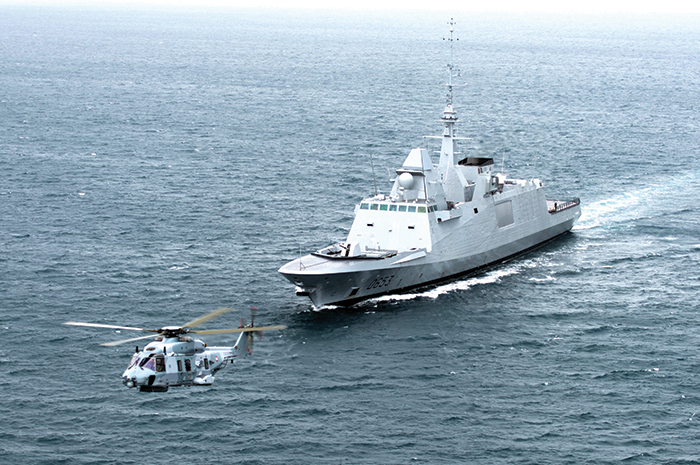TECHNICAL EXCELLENCE AND DIGITAL JOIN FORCES TO MAKE COLLABORATIVE ANTISUBMARINE WARFARE (ASW) A REALITY
The country’s main port was now reliant on warships to protect essential food supplies. A group of hostile attack submarines was approaching… with crystal-clear orders: cripple the harbour and bring the country to its knees. But the navy was operating Thales’s BlueScan, configured with detailed ocean charts and seamlessly linked to its Combat Management Systems. It was processing data from ship-, buoy-, and even drone-based sonar—up and down the coast. On board a frigate, operators calmly assessed a real-time view of the entire underwater situation—weighing virtual-assistance recommendations from Artificial Intelligence as they went. The collaborative tactical advantage was decisive: the hostile subs were rapidly denied access to sovereign waters—never getting close to the port. Vital food shipments were safe.
Once upon a time, only superpowers had real submarine capabilities. Today, as ASW’s centre of gravity shifts towards the Asia-Pacific, a raft of players, old and new, are aggressively expanding their fleets. Leading navies have articulated a clear need: an ASW version of “work smarter not harder”—and a strong desire to realise the long-trailed potential of collaborative combat.
The key to meeting these needs lies in developing an overarching, modular approach to ASW that can gather data from sonar across a range of platforms and a wide area. If that data can then be fused, analysed and classified, the potential gains are huge: operators and command centres see only the information they need, and are freed to work in genuine coalition—focusing jointly on key decisions and seizing the tactical advantage.
Navies are increasingly looking to Thales to help make this concept a reality. The company’s decades of experience in sonar, familiarity with the needs of numerous navies and platforms, and heavy investment in digital, are exactly the right ingredients for success.
Thales has brought all these elements together in BlueScan: a next-generation digital system that gathers and processes data from multiple sensors and platforms—offering ASW teams a comprehensive and real time view of all their assets at sea. It can handle the entire Thales sensor catalogue, and the use of common architecture and software integrate third-party sensors and multiple Combat Management Systems. What’s more, the system’s modular design means it can easily be tailored to countries’ specific needs, such as harnessing local knowledge of ocean topography to make sophisticated environmental assessments and recommend optimum sonar configurations. Innovative aids—like presenting the situation through the eyes of a hostile submarine and fully realistic options for onboard operator training—complete the package.
While BlueScan can be a game changer for navies in the short term, Thales has a broader vision to continually enhance its customers’ capabilities. Testing is well underway on the full integration of technologies like Big Data Analytics and Artificial Intelligence (AI). These will play-in historical data in real time, ultimately providing “virtual assistants” that will further free operators and boost collaborative potential. And, with drones set to feature heavily in the years to come, the system’s structure and scalability will help navies meet their needs in embracing the unmanned future.
©François Etourneau/Marine Nationale/Défense



